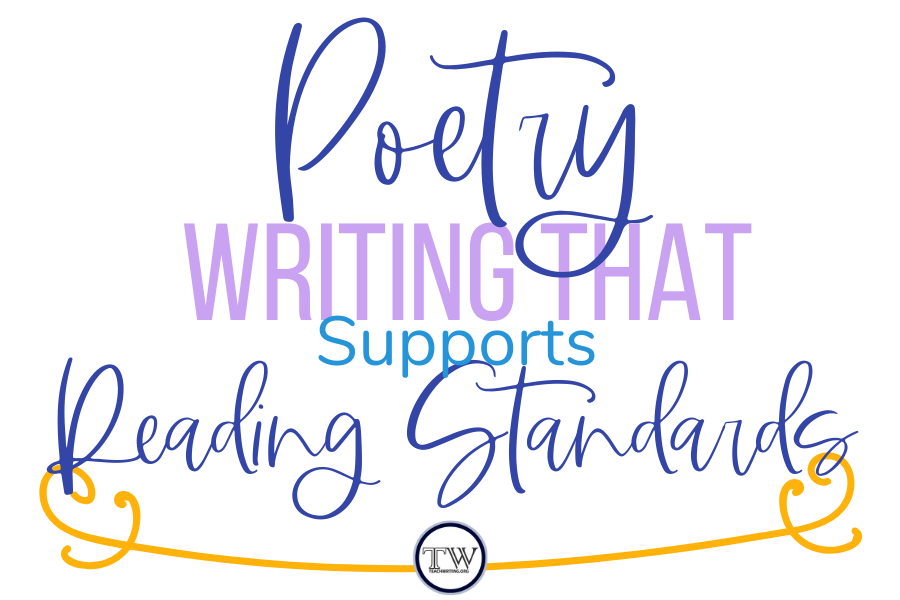Poetry Writing That Supports Reading Standards - Found Poetry and Blackout Poetry
Assessing Tone and Mood with Blackout Poetry
One of my favorite ways to use poetry writing as an assessment is through blackout poetry. This allows a student to look deeply at any text and break down the meaning at the word choice level. Exploring a text with this depth is perfect for a tone and mood assessment.
To begin my tone and mood unit, I first delve into connotation vs. denotation. Students explore the emotion behind words, as this emotion will guide us toward analyzing the author’s tone. After exploring tone and mood in a variety of ways throughout the unit, I ask students to demonstrate their understanding of connotation, denotation, tone, and mood with this blackout poetry assessment
I ask students to analyze a short story or poem. I love using “Cemetery Path” by Leonard Ross for this purpose. This story is perfect for its brevity (it can fit nicely onto one page), and for its incredible mood. I also love how the tone and the mood can be so contrasting with this piece. I often remind my students that an author’s tone and the reader’s mood can be very different. This is a great story to exemplify this concept!
I have also asked students to analyze poetry for its tone. I have used both “My Father Teaches Me to Dream” by Jan Beatty, and “The Facebook Sonnet” by Sherman Alexie. These both have a distinct tone that students seem to relate to and connect with as they complete the assessment.
Students begin by identifying the author’s tone and the reader’s mood. Then they put a box around the words and phrases that identify the author’s tone within the text. Finally, students draw the mood of the piece over the text. They cover the entire text, leaving only the tone words and phrases visible to the viewer. Blackout poetry technically uses simply black ink to cover the text, but I have allowed students to use color in their images. They make for a beautiful bulletin board!
All of these lessons can be found in my Tone and Mood Unit!
Assessing Theme with Found Poetry
Theme is one of those essential skills that seems to be taught every year. I know this because my high school students tell me every chance they get!
“BUT, Mrs. Taylor, we have been learning theme since elementary school!” said in the most exasperating tone possible. Throw in the eye rolls, and the drooped, disengaged shoulder shrug, and the visual is complete.
In truth, they are not wrong. But, as I explain to my students, theme becomes more challenging as the text becomes more challenging, and reading, without understanding the author’s message, is meaningless! So, we continue to practice theme.
However, in hearing their cries of frustration, and potentially boredom, I began searching for a new way to practice and assess theme. I found this in Found Poetry.
Found poetry asks students to recast the author’s words into a poem. They are charged with the task of identifying the author’s words and phrases, then adapting only the best of these into a poem.
How does this relate to theme?
Our standards ask students to trace and track the development of a theme over the course of a text. They do this by citing evidence of plot development, word choice, character development, setting development, etc.
I ask students to read a short story, or a short excerpt from a longer text. Most recently, I asked my American Literature students to read an excerpt from Walden by Henry David Thoreau. This is easily applied to any short story that has a clear theme statement. For younger students, I have used “The Necklace” by Guy De Maupassant, or “The Blue Hotel” by Stephan Crane.
After students have completed an initial close reading of the text, I facilitate theme discussions with student groups. Together, we will create a list of possible theme statements to track throughout the short story or excerpt. Then, I ask students to reread the text. This time highlighting specific words and phrases that showcase a particular theme statement.
Finally, students will recast these words and phrases into a poem of their own.
The challenge: this poem must have the same theme as the original text. They must take the author’s words and phrases in the order that they appear in the text, but they are free to choose any words they desire. Students can change punctuation and spacing as well as smaller changes, such as capitalization, possessives, plurals, tenses, etc.
While it is not possible to please every student with every assignment, most of my students have found this to be a creative and fun way to show their understanding of theme. They have delivered beautiful found poems; poems they are exceedingly proud to showcase. For students who struggle with writing, especially poetry, they have found solace in not needing to create their own words. And, of course, I LOVE that we are addressing reading and writing standards within the same lesson! It is truly a win, win for secondary students!
Fun Freebie! Check out this free Walden Found Poetry Theme Assessment unit. Click on the image to download this great freebie.
About the Author
Liz is a collaborator on teachwriting.org and the founder of Teach BeTween the Lines. She has been teaching for over ten years; she has loved growing young minds through literature and the art of crafting the written word. She is currently working on her doctorate in Education from the University of Minnesota, and holds an M.A. in Education from St. Mary’s University, Minnesota. She loves to write short stories in her free time, especially in those cold Minnesota winters. She is supported by a wonderful family made better by the addition of her two beautiful children.







